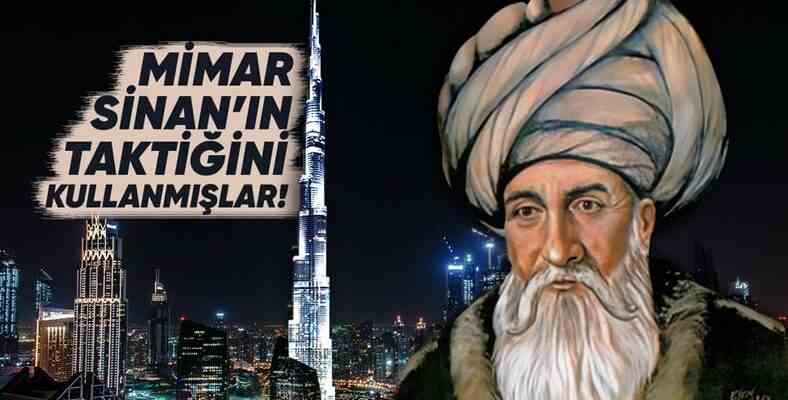Burj Khalifa, the tallest building in the world, is not only an architectural feat, but also an engineering marvel with the foundation that sustains it.
You may not know Burj Khalifa, the symbol of Dubai, which has become the largest city in the United Arab Emirates and even one of the largest mega cities in the world. This magnificent structure is of great importance not only for Dubai but also for the World. tallest building in the world has held the title since 2010.
Of course, it requires a great engineering effort to build this 828-meter-long structure, because such a tall building can be built to withstand earthquakes, weather conditions and other natural events. able to stand needs.
The way to achieve this lies in the foundation of the Burj Khalifa, because if the foundation was not solid, it would collapse even when the wind blew.
Construction started in 2004 and Opened in 2010 Burj Khalifa, the tallest skyscraper in the world, was designed by Owings & Merrill, a US-based architecture firm. The construction of the building was carried out by Dubai-based construction company Emaar Properties.
The first 2 years of the construction, which lasted 6 years, passed with just building the foundation. This magnificent building has been built to withstand all kinds of difficulties. foundation that allows it to stand without tippingIt has a truly stunning design.
So what is the secret of the foundation of this Burj Khalifa?
The first criterion that engineers consider when constructing a building is, is to find a hard layer. The deeper the hard layer below the location where the building is intended to be built, the lower the foundation will be. But for Burj Khalifa the situation is very different because as you know Dubai, a desert and just under the sand weak sedimentary rocks available.
That’s why Burj Khalifa’s architects and engineers used a method that a local architectural figure used 466 years ago. Sinan the Architect was built on the foundation of the Süleymaniye Mosque, his masterpiece, which survived the earthquake without cracking a single wall. concrete pile used the method.
This is why Burj Khalifa is so earthquake resistant. The nearly 1km-high structure spans 192 concrete piles driven 50 meters deep into Dubai’s sandy ground. Its foundation is 50 meters in diameter and 3.7 meters high. Thanks to it, it can remain earthquake resistant.
This is an ingenious idea. Look what would have happened without concrete piles:
The reason why the foundation would not be able to support the building as in GIF, if the concrete piles did not exist, is because the ground made of weak sedimentary rock would not be able to withstand the weight of both the foundation and the building itself. the ground is soft so the foundation slips.
To prevent this, friction force is used. As you can see from the GIF below, if we sink a long, thin stick into a ground such as earth or sand, after a while, it will no longer be we couldn’t push we notice. The reason of this, is the frictional force exerted by the ground.
These bars are so strong that they do not move unless a pulling force is applied. Now these sticks there are 192 of themImagine that they are located at a depth of 50 meters and are made of concrete.
A building built on such a piled ground would have excellent resistance to earth and underground movements, as does the Burj Khalifa.
Of course, it is not enough to just drive the piles, they must be strong and not deformed.
Driving 192 stakes is a brilliant idea, yes. But these stakes are also Dubai’s salty groundwater must be protected against such factors.
To make these piles strong, engineers used water-flowing and fast-hardening SCC C60 They used a type of concrete. Workers who drilled boreholes with the help of excavators placed the steel skeletons in these wells and filled them with concrete.
Thus, the piles became earthquake resistant, but as we mentioned, Dubai’s underground waters can deform these piles.
This problem is also in batteries. electrolysis solved by the method. Steel skeleton inside concrete piles, cathode loaded. The filter that keeps the water from the groundwater is made of titanium, that is. anode loaded.
When DC current from rectifiers interacts between them, electrons accumulate at the cathode. This prevents the piles from deforming, but is extremely abrasive to the anode-loaded titanium filter.
For this reason, this anode filter needs to be replaced over the years. At the base of the Burj Khalifa because of this whole anode-cathode system electric current is always circulating.
The troublemakers aren’t just underground sources, this tall building has to withstand sandstorms as well.
Since Dubai is a city built on a desert, it is frequently exposed to sandstorms. The average velocity of these sandstorms is also between 40 and 150 kilometers per hour it varies.
In such a case, the engineers decided to increase the number of concrete piles at the ends of the building’s three-leaf clover-like foundation so that the building would not tilt. This design is based on the 828-metre building. reaching speeds of up to 250 km/h It allows it to stand up against the winds.
Burj Khalifa is a building that left its mark on world architectural history. It really amazes itself with its height, architectural design and technological features. On the basis of such a structure, Mimar Sinan’s 4 centuries ago The use of the concrete pile method he used is also a source of pride…
RELATED NEWS
